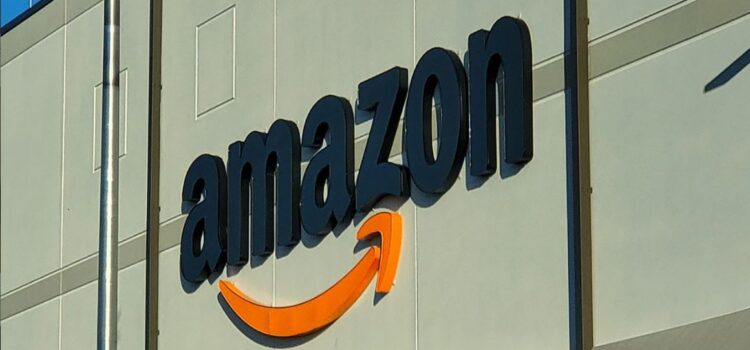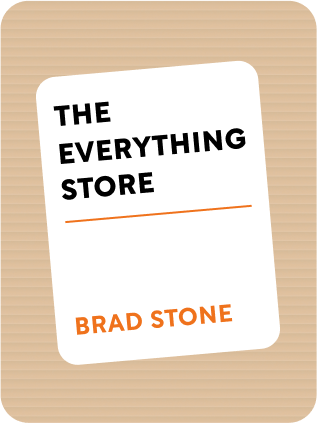

This article is an excerpt from the Shortform book guide to "The Everything Store" by Brad Stone. Shortform has the world's best summaries and analyses of books you should be reading.
Like this article? Sign up for a free trial here .
How was Amazon started? How did the online bookstore that started in a basement grow to need a warehouse in just two years?
Jeff Bezos had the idea for an online bookstore in 1994 and launched it in 1995. At first, they pulling all-nighters and packing boxes on their basement floor. By 1996, the revenue was growing 30%-40% every month and Bezos was forced to buy a warehouse.
Continue on to learn how Amazon was started and how it grew so rapidly.
The Start of Amazon
How was Amazon started? Below is the timeline of events that lead to the creation of Amazon:
Spring 1994: Bezos tells D. E. Shaw he plans to leave to create an online bookstore. Shaw is sympathetic (given that he himself left Morgan Stanley to found his firm) but notes that Shaw might compete with Bezos in the future.
- Soon after, Bezos leaves New York for Seattle, a technology hub with a relatively small population, thus not needing to collect state sales tax. His wife MacKenzie is the company’s first accountant.
- He backs the company himself with $10,000 and adds another $84,000 in loans over the next 16 months.
- Shel Kaphan from D. E. Shaw joins Bezos as the company’s first employee and technical steward. His contract requires him to commit to buying $5,000 of stock upon joining.
July 1994: The new company needs a name.
- Bezos registers Cadabra Inc., but this is often confused with “Cadaver.”
- They also like “aard.com” because it regularly arrives at the top of alphabetical website listings, and “relentless.com” for its description of the Amazon team.
- In October, Bezos leafs through A in the dictionary and comes across Amazon. “This is not only the largest river in the world, it’s many times larger than the next biggest river.” They register the URL on Nov 1 1994.
- (Relentless.com still redirects to amazon.com today.)
Early 1995: Bezos’s parents invest $100,000 in Amazon. Bezos tells them there is a 70% chance they would lose it all: “I want you to know what the risks are, because I still want to come home for Thanksgiving if this doesn’t work.”
Spring 1995: Amazon has a beta website and sends links to friends and colleagues. The slogan: “One million titles, consistently low prices.”
- Bare and rudimentary, the website looks uninviting to people who have happily shopped at bookstores. To some, it seems improbable that people would ever want to order books online.
- A former coworker places the first order on April 3, 1995, for “Fluid Concepts and Creative Analogies.” The orders ramp up from there.
- After each purchase, a bell rings on their computers. Within a few weeks, it rings so frequently they turn this alert off.
- For each order, Amazon orders the book from a distributor, paying 50% off list price. The book would arrive, and Amazon would store it in the basement and ship it to the customer.
- Around this time, they also move out of the Bellevue garage into a small office above a Color Tile retail store in the industrial SoDo district. They have a 200-square-foot basement “warehouse.”
June 1995: Amazon adds a review feature. They believe reviews would give them a huge competitive advantage against online bookstores.
July 16, 1995: Amazon goes live, public to all Web users.
- The first week after launch, they take $12,000 in orders and ship $846 worth of books. The next week they take $14,000 in orders and ship $7,000 worth of books.
- There is a large long tail of esoteric books ordered, furthering the belief in the importance of selection. These are books that you could never find in a physical bookstore.
- When the company falls behind in shipments, everyone spends nights in the basement, sitting on the floor packing boxes. Someone makes the (obvious) suggestion of adding packing tables to the warehouse, and Bezos thinks “that was the most brilliant idea I had ever heard in my life.”
- A few weeks later, Jerry Yang and David Filo of Yahoo ask if Amazon would like to be featured on their homepage. They know it’d be like taking a sip through a fire hose, but they decide to accept.
- Popularity begets chaos. Amazon maxes out its line of credit and has no processes to handle returns.
Summer 1995: Bezos wants to raise more money, seeking $1 million from investors each contributing $50k, at a valuation of $5 million.
- Amazon has $139k in assets ($69k in cash), had lost $52k in 1994, and are on track to lose $300k that year.
- Bezos projects $74 million in sales by 2000 if things go moderately well (actual sales in 2000: $1.64 billion). He also predicts moderate profitability (actual net in 2000: $1.4 billion in losses).
- Bezos clearly has grandiose plans for the future, though he doesn’t reveal much of it. He envisions a day when they sell not only books about kayaks but kayaks themselves, subscriptions to kayaking magazines, and reservations for kayaking trips.
- To many potential investors, the business plan doesn’t seem like it’ll work. “If you’re successful, you’re going to need a warehouse the size of the Library of Congress.” It was hard to imagine that Amazon would one day have many warehouses bigger than the Library of Congress.
- Anecdote: a potential investor who likes shopping in bookstores is dubious that online bookstores will take off. One day, he fails to find a book for his son at a local shop, and he changes his mind and invests.
- His parents invest another $145k.
- Bezos uses this money to upgrade servers and hire.
- They start an editorial group, writing descriptions to give the feel of a trustworthy independent bookstore and to help people get comfortable with the idea that there were people on the other side of the screen.
August 9, 1995: Netscape Communications IPOs. The stock jumps from $28 per share to $75. This is one signal of a heated interest in the Internet.
March 1996: Amazon moves to a larger building with a bigger warehouse a few blocks away.
- At this point, revenues are growing 30-40% a month.
May 1996: the Wall Street Journal features Amazon on its front page.
- “Amazon provides a singular case in which the frequently hyped Web is actually changing consumers’ lives.” (The added value being an immensely large catalog that no offline retail store could provide.)
- “He is quick to dismiss fears that Amazon could ever spell the end of traditional bookstores. He regularly hangs out at the Elliott Bay Book Co…’We are trying to make the shopping experience just as fun as going to the bookstore,’ he says, ‘but there’s some things we can’t do.’ “
- (Shortform note: the article mentions reviews for this book, which has reviews from 1995 – a neat gem of Internet history.)

———End of Preview———
Like what you just read? Read the rest of the world's best book summary and analysis of Brad Stone's "The Everything Store" at Shortform .
Here's what you'll find in our full The Everything Store summary :
- How Amazon went from an online bookstore to the largest internet retailer in the world
- What Jeff Bezos did to compete with companies like eBay, Zappos, and Diapers.com
- What it was like to work for Jeff Bezos






